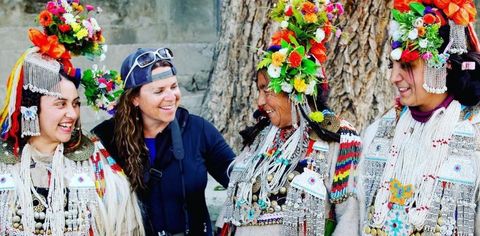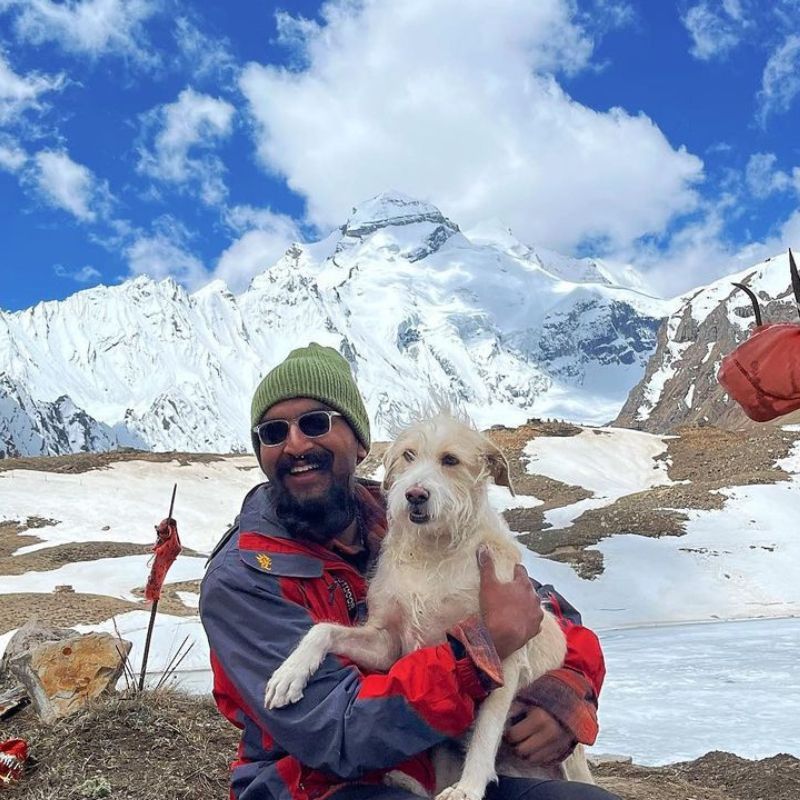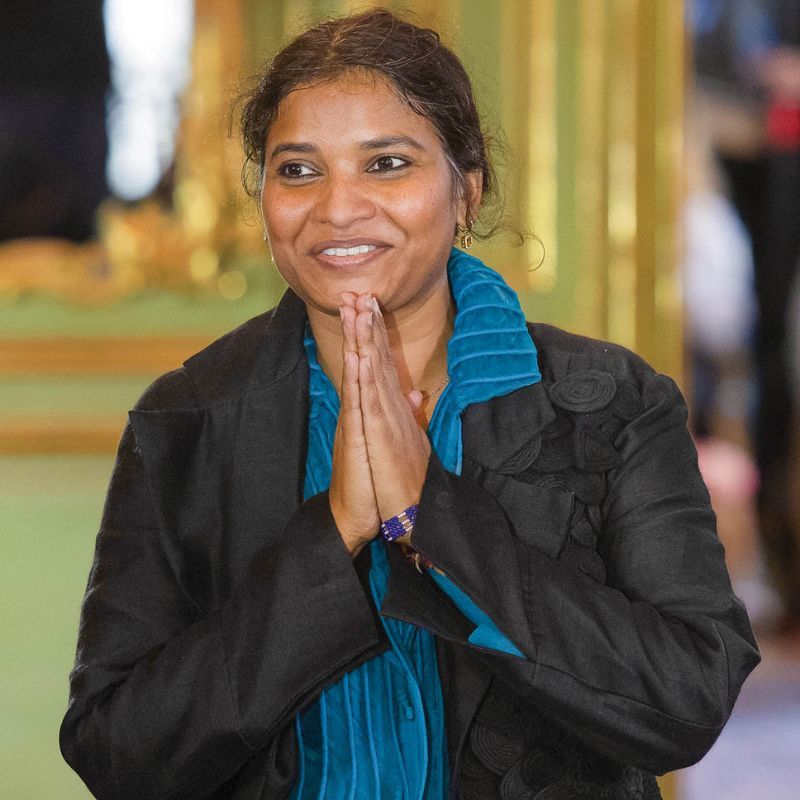
Equipped with a keen eye for human portraits and an inquisitive mind ever-ready to unravel stories, Canada-based Julie-Anne Davies found a narrative amid the locals of Ladakh itching to be shared. Her love for the nation, then, compelled the mountaineering-enthusiast to set up tours to India’s northern barren lands, allowing the western world to get a whiff of the nation’s vast culture, traditions, and people. By Bayar Jain
T+L India: When did you first visit India and what did you explore?
View this post on Instagram
Julie-Anne Davies: I have travelled to India during both, the summer months and the spring; each time to Ladakh with several days on either end in and around Delhi. In Ladakh, I travelled to remote corners: first, up the Aryan Valley to visit the Brokpa Tribes; to the far northern reaches to Balti village along the border with Pakistan; and to the high plateau of the Changthang, with stops at monasteries and villages all throughout the region.
T+L India: What were your first impressions of the country?
View this post on Instagram
Julie-Anne Davies: It was love at first sight. My first stop was Delhi. What struck me the most right away was that there were deep, pervasive smells of spices; vibrant colours; wild and noisy traffic; and the sheer amount of people. Once I started walking around the markets, the thing that definitely struck me the most was how open and welcoming the people were.
View this post on Instagram
Arriving in Ladakh was a different experience than Delhi, but a deeply welcoming one as well. The mountains and monasteries I could see from the plane as I was landing in Leh were stunning! The airport was modest and Ladakh’s Buddhist influences were evident immediately. The air was thin and, although I am from the mountains of Canada, the altitude was still enough to have me feeling tired and compel me to take it easy for the first few days.
T+L India: What were some moments or experiences that stuck out for you during your trip to India?
View this post on Instagram
Julie-Anne Davies: There were so many amazing moments! I would have to say that the ones that have stuck in my mind the most always involved encounters with locals. In Ladakh, while I was wandering around on the outskirts of a small village, I could hear singing. I followed the singing and came across a group of locals [who had gathered] together in the fields with their yaks plowing and seeding the fields. They were about to stop for tea and motioned for me to join them, which I did. They shared their food, tea, songs, rice wine and abundant laughter with me. It was a beautiful moment! All the culture, scenery and fascinating diversity aside, I think the people are what makes India so special for me.
T+L India: An Indian dish that you tried that you wish you could get in your home country?
View this post on Instagram
Julie-Anne Davies: I could eat curry, especially butter chicken, every night for the rest of my life and be fully satisfied. While I can get many Indian dishes at home in Canada, as Canada has a large Indian population who have brought their incredible recipes with them. One dish that was simple, but I loved and couldn’t get enough of was thukpa, a Tibetan noodle soup—broth, onions, cabbage or kale or whatever greenery was growing at the time, and noodles. It was like a warm hug every time it was offered, especially while travelling to the higher, cooler elevations of Ladakh.
T+L India: Places that you would like to visit next time you are here?
View this post on Instagram
Julie-Anne Davies: I want to travel to every inch of India, but to narrow down, I am really drawn to Buddhist and Tibetan influences. I would love to travel to the heart of the Ganges, up to the Gangotri glacier and—as a mountain lover and with my interest in remote cultures—I think I will spend a great deal of time exploring the harder-to-reach villages in northern India before going anywhere else.
T+L India: According to you, what is so special about India?
View this post on Instagram
Julie-Anne Davies: I think the real beauty of India lies in it’s incredibly rich layers of life. Coming from a fairly secular North American background, I am truly drawn to the ways in which religion, culture, spirituality and tradition are interwoven into everyday life in India. There is a depth to life that is often missing in Western society. The mystical still plays a key role in India and perhaps has a connection to wisdoms that are lost elsewhere.
T+L India: Define India in a sentence.
View this post on Instagram
Julie-Anne Davies: A mystical land shaped for millennia by tremendous cultural, geographical, spiritual and religious diversity.
T+L India: Your most memorable stories from tours you have led in the Himalayas.
View this post on Instagram
Julie-Anne Davies: Again, there were so many memorable moments! One that really stood out was high up on the Changthang plateau. We [Davies and fellow travellers] came across an extremely remote tent camp that was home to two women Changpa nomads and their herd of several hundred goats. It was an intersection of worlds. We were a small group of Western women meeting these two nomadic women who had carved a life out of one of the most barren landscapes on Earth. They invited us into their goatskin tent for a fire, tea and smiles; it was an encounter that needed few words. We gave them each a bag of dried apricots and they proudly showed us their handmade pashmina sweaters, followed by a tour around their camp to meet their newborn goats born earlier that morning.
View this post on Instagram
What stood out about this encounter was how beautifully these women were coexisting with the raw and barren landscape, and how at peace they seemed to be. It was such a profound thing to witness. It left me questioning the validity of all the ‘things’ we deem essential to our survival and happiness in Western society.
T+L India: Some life lessons you have learned during your interaction with the women of Ladakh.
View this post on Instagram
Julie-Anne Davies: I think one of the most pertinent life lessons I learned from spending time with the women of Ladakh is just how vital and precious traditional knowledge and our connection to nature really is. For centuries, they have coexisted with their immediate landscapes via intricate knowledge that has been passed down from one generation to the next. That knowledge is now at the threat of being lost due to the coming wave of modernisation that is making its way into every valley and culture around the globe. Traditional practices are being threatened as well by recent and unprecedented changes in the climate.
View this post on Instagram
What was really driven home to me was the cost of what we refer to as ‘progress’ in the West and, if left unchecked, this tidal wave of climate changes combined with modernisation could mean the devastating loss of thousands of years of wisdom. The life lesson for me is to understand much better the essential need for humanity to reconnect with nature, and to protect and preserve the wisdom of traditional cultures like as if our survival as a human species depends on it…because it does!
Related: Meet The Last Of Aryans In The Faraway Lands Of Ladakh










